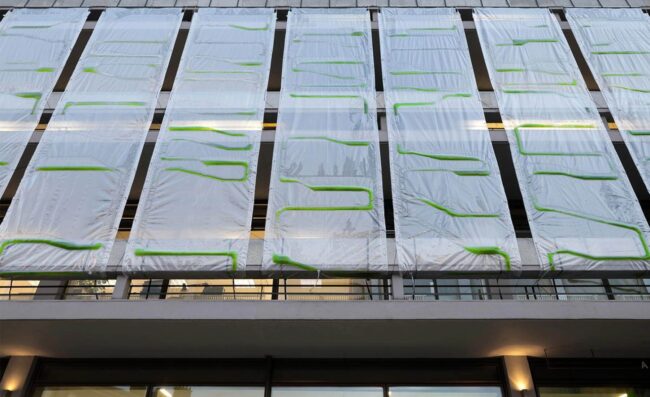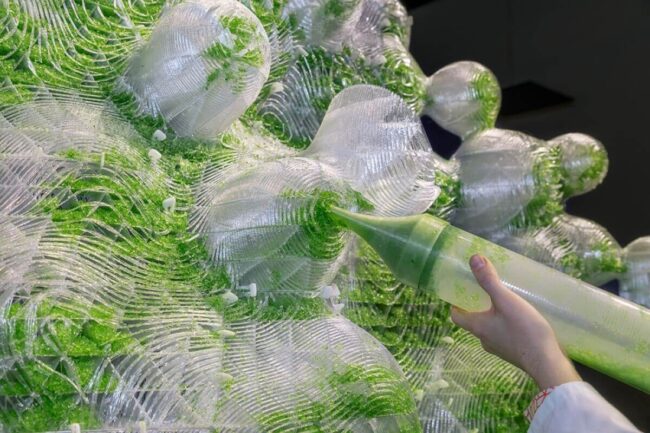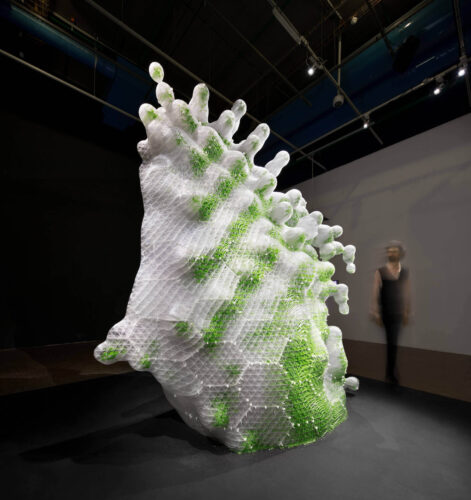From a distance, the work of Claudia Pasquero and Marco Poletto look like delicate avant-garde art installations. Glowing with radioactive green, each design looks like a newly discovered life-form. A closer glance will show that these chartreuse curves and layers function as more than just your everyday art installation. Based in London, Pasquero and Poletto are Italian architects who create bio-digital sculptures and living installations that work to transform the relationship humans have with the environment. Their awe-inspiring creations aim to seamlessly integrate nature and its beneficial qualities into urban settings. Using microorganisms such as algae as the base building material, Pasquero and Poletto’s work can be implemented into urban spaces such as domestic interiors, office environments, and city buildings to offset the effects of our growing carbon footprint.



While the built world grows faster than the natural, Pasquero and Poletto are integrating the latter into the former to find a balance. Their 2018 living installation superTree combined architecture and innovation to create an artificial tree that produces more oxygen than a natural tree. The glowing canopy and main trunk of the tree were entirely photosynthetic, powered by colonies of cyanobacteria which produce ten times more oxygen than the leaves of an actual tree. The most popular of their designs is the Photo.Synth.Etica, more commonly known as the algae curtain. Two square meters of this curtain facade has the equivalent capacity to absorb CO2 to a mature tree. The two square meter curtains contain around fifty litres of microalgae culture, weigh a hundred times less than a mature tree, and take up ten times less space. Algae curtains do the same work that planting a tree does, but allows for a more discreet and economical integration of sustainability into city spaces.


Pasquero and Poletto are bridging the gap between artificial and natural, showing that the two are not as different as we may have thought. Their unique approach redefines what sustainable practices look like, articulating it in a way that is palatable to all, even the sceptics.





